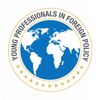
By John Ashley
From 1945 to 1991, the world lived in constant fear of nuclear annihilation as the Unites States and the Soviet Union participated in a high-stakes arms race. Luckily, crisis was evaded, and such fear has been largely subdued since the dissolution of the Soviet Union in 1991. However, in late December 2016, then President-elect Donald Trump tweeted something alarming: he suggested that he would be willing to participate in a nuclear arms race with Russia. When the press questioned Trump about the tweets, his response did little to alleviate concerns. “Let it be an arms race,” he said.
While President Trump’s administration has backpedaled on the idea, and his position remains unclear, the specter of another nuclear arms race is enough to raise major concerns. There is no doubt that a second nuclear arms race would pose new and more dangerous challenges. The substantial threat of rogue states building and developing nuclear programs is multiplied by the possibility of non-state actors acquiring a nuclear bomb or fissile material. Defense preparations also need to consider the advent of cyber warfare and its potential impact on an arms race.
During the Cold War, the United States and the Soviet Union had a virtual monopoly on nuclear technology. For other states, the barriers to entry were simply too high. Since the end of the Cold War, however, those barriers have fallen. India, Pakistan, and North Korea have acquired nuclear weapons, the lattermost with the help of Pakistani scientist A.Q. Khan’s clandestine nuclear network. Khan’s network showed how easily the technology and know-how could be spread or sold to the highest bidder. With North Korea now operating outside of the Non-Proliferation Treaty (NPT), the odds are even greater that the know-how to build a nuclear device could pass into the hands of non-state actors, including terrorist organizations.
While the threat of non-state actors acquiring nuclear weapons, or any other types of weapons of mass destruction (WMD), is not new, the need to secure nuclear technology has never been greater. The security vacuum created by the fall of the Soviet Union has allowed illicit trade in nuclear materials to grow and thrive. Unlike governments, non-state actors have no restraint against how or where to use WMD. Even with the passage of United Nations Security Council Resolution (UNSCR) 1540, the threat of a non-state actor acquiring fissile or radiological materials remains a chronic problem. Many of the materials that could be used to create a radiological or nuclear weapon are simply lying around in unsecure facilities waiting to be picked up, such as a derelict research reactor in Kinshasa, Democratic Republic of Congo. With these materials, a terrorist organization could construct a device to be used against the United States, Russia, or one of their allies.
Unlike the increased nuclear threat from rogue states and non-state actors, cyber warfare is unique to the twenty-first century arms race. The growing number and sophistication of daily cyber-attacks is alarming, and – as the 2016 US Presidential Election showed – attackers are getting bolder in target selection. Whether rogue or state-backed actors, cyber-terrorists pose a unique threat to nuclear security. There are three potential avenues of attack for a cyber-terrorist to go after a nuclear arsenal.
First, the attackers might attempt to hijack a missile on alert. This is the most remote – at least, for the United States – due to the often archaic on-site command and control systems. However, as the US arsenal is modernized and the system becomes more complex, it becomes increasingly likely that a cyber-attacker could find a weakness to exploit.
Second, the attackers can disrupt the command and control system. Disruption is the most likely form of cyber-attack that could befall a nuclear arsenal. Power cuts to vital infrastructure or interrupting communications between command and nuclear forces could disrupt defense and would give an attacker the opportunity to launch a nuclear strike unimpeded.
Third, an attacker could fake an imminent nuclear strike, prompting the launch of a real nuclear strike. Considering the United States and the Soviet Union came close to launching nuclear attacks at one another due to computer glitches and misinterpretations of military exercises in the past, this potential avenue of attack is the most frightening. Incapacitating key communication lines and sensors could prompt a nuclear power on high alert to launch what it perceives as a retaliatory strike, when it is actually a first strike.
President Trump’s non-opposition to having an arms race creates the terrifying possibility that one could actually occur. Unlike during the Cold War era, a new arms race would have to contend with rogue nations, non-state actors, and a twenty-first century cyber warfare phenomenon. In such a dangerous environment, the only winning move is not to play.
John Ashley is the Nuclear Security Fellow at Young Professionals in Foreign Policy (YPFP). John received a Master of International Policy from the University of Georgia in 2015, where he concentrated in CBRN nonproliferation and international security.
